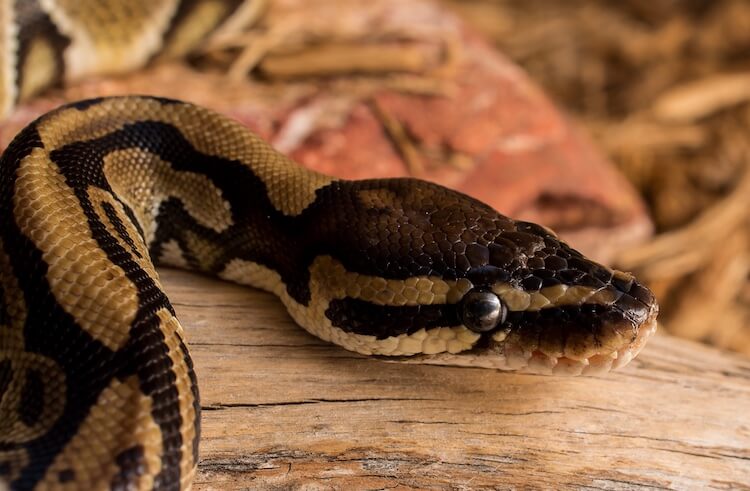
Ball pythons are one of the best pet snakes for beginners. They are low maintenance, hardy and have a very easy-going, friendly temperament.
Despite being a great pet snake, Ball pythons do have specific needs for their enclosure’s setup. This includes maintaining a heat gradient, humidity level and basking spot. Some beginners find it hard to control the humidity level in a tank. Or, they struggle to maintain a suitable ambient temperature over 24 hours.
Without the right temperature and humidity, ball pythons can become sick. Some common health issues can include stuck shed or respiratory problems.
In this article, we will cover their humidity and temperature requirements. We also share how to setup and maintain a good tank climate…
Ball Python Humidity
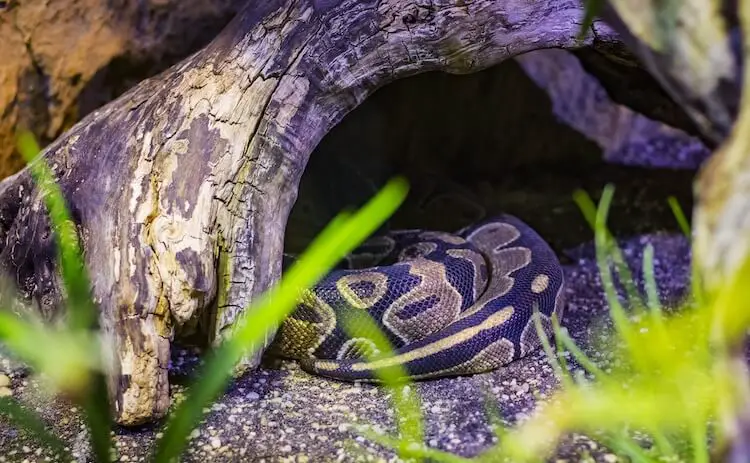
Humidity is a relative measure of the amount of water vapor in the air. The higher the humidity level, the wetter the air will feel. Humidity is very important for the health of a snake. Improper humidity levels can make your ball python sick or cause stuck shed.
Ball pythons are native to Central and West Africa, they are used to high heat and humidity levels. Humidity in their native range is between 55% to 70%, but it can spike to over 80% in the morning.
For pet ball pythons you will want to keep humidity somewhere between 55% and 60%. This humidity level allows pythons to keep their skin moist enough to shed properly and avoids respiratory infections. Also, it is not too high that their skin will be constantly wet.
By maintaining a ~60% humidity in their enclosure, you can extend the lifespan of a ball python well beyond their natural 10 year lifespan. Some pet individuals have lived for over 25 years.
Low Humidity
Humidity should not dip below 45%, even at night when the temperature cools. Anything below 45% humidity for a long period of time can cause shedding problems (e.g. stuck shed). If a ball python cannot properly shed its skin, this can cause several health issues:
- It can result in patches of stuck shed, particularly on the eyes, which can cause problems with vision. If left long enough, it can cause blindness.
- It can cause damage to the new scales. New scales can be torn and exposed to dirt and bacteria that can lead to infections.
Keeping humidity lower than 40% for more than a few weeks can be very harmful to a ball python, especially during shedding. You may notice some of the issues above. How quickly this happens depends on how low the humidity level is, and the individual snake. Some individuals are hardier than others. Lower humidity is more dangerous for younger snakes as they shed more frequently as they grow.
The best rule of thumb is to keep the humidity above 50%, ideally between 55% to 60%.
High Humidity
On the other end of the spectrum is a tank with very high humidity. Health problems can also occur up if you keep your snake too wet.
Humidity levels above 60% are not an issue, provided there are not pools of water forming in the cage. Normally you will start to see pools of water form at around 75% or 80% humidity.
Humidity levels above 80% will create an environment that is constantly wet. It can also cause the temperature to become too high. High humidity traps heat and creates a perfect environment to grow mold, bacteria, and other nasty things that your snake should not come into contact with.
A common bacterial infection in ball pythons is infectious stomatitis (i.e. mouth rot). Symptoms of mouth rot include a loss of appetite, dehydration, swollen gums, bubbles of mucus around the mouth, and mouth-open breathing.
Respiratory infections are a serious health issue that can be fatal if left untreated.
High humidity also traps heat in the tank. This can especially be a problem in plastic tubs, which are excellent at trapping moisture. High humidity in a plastic tub can cause your snake to suffer from heat exhaustion. This is one of the reasons why reptile terrariums should be glass.
These health issues may sound terrifying to new snake owners.
But, as long as you carefully monitor the enclosure’s humidity all of these issues are easily avoided.
The best setup will have two hygrometers. Hygrometers are a small device that measures humidity.
Using two hygrometers makes it easier to see how the humidity level changes with the heat gradient.
Ideally, place one on the cool side and one on the hot side of the tank. Place them a few inches above the substrate, ideally in between the bottom and halfway point on your cage. Again, you will want to make sure both hygrometers read between 55-60%.
If your ball python’s humidity is between a range of 55% to 60%, good job! You humidity level is perfect.
Just continue to track it with a hygrometer, especially during season changes where the humidity in your house can change.
If you are having trouble, keep reading to see how to increase or decrease humidity.
How To Increase Humidity In Ball Python Tank
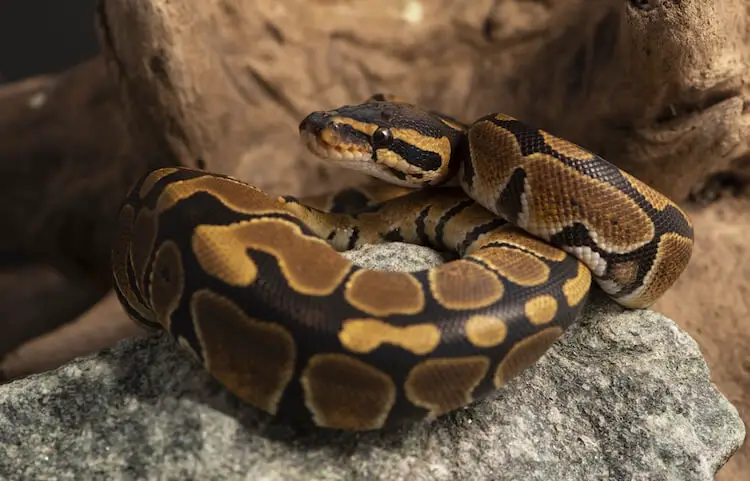
The most common issue for beginners is raising humidity levels to reach a range of 55% to 60%. This is because the enclosure is normally inside a room where the air is dryer. The air in a room normally has a humidity of 30% to 50%, depending on the season.
Luckily, controlling the humidity level in a ball python’s cage is fairly simple.
Misting
One of the cheapest ways to quickly increase the humidity is to mist the enclosure daily. You should lightly mist the walls of the tank as well as the substrate.
The tank should be misted enough to dampen it, but not completely saturate it.
Start by misting the tank with room temperature water in the morning. After misting, humidity should briefly reach 65%. Be careful not to spike the humidity much above 70% as this can cause respiratory problems.
You can mist once or twice a day as needed. Just make sure to keep an eye on the substrate for any signs of mold or rot. If you see this, you may be misting too heavily.
Some owners choose to automate misting by using a reptile mister. However, this isn’t necessary for Ball pythons.
Change the Substrate
Another way to increase tank humidity is to change the substrate you use.
Many beginners use paper towels or newspaper as it is cheap and easy to replace. But, it does not do a good job of retaining moisture.
A better substrate for ball pythons is cypress mulch or aspen shavings.
Both substrates are relatively cheap and do an excellent job of holding humidity. Cypress mulch is the best choice as Aspen shavings are notorious for rotting or growing mold if any water is spilled on it.
Tank Setup
Finally, you can change the tank humidity by simply moving your tank or changing the setup.
If the enclosure is placed directly beneath an air vent, or is located next to a window that gets direct sunlight, it can make the enclosure too dry. This will cause the humidity to drop. You should put your snake’s enclosure in a corner that is not beside a window or radiator.
Now let’s talk about tank setup.
There are a variety of ways to increase humidity from a setup perspective:
- Place a large 6″ water bowl in the enclosure with a heat pad underneath it. This will cause the water to evaporate and will increase the overall humidity in the tank.
- Use a glass or solid top instead of a screen-top. Alternatively cover 75% of the screen with tin foil. Screen lids allow for a lot of air circulation that can lower the air moisture inside the cage.
In the rare case you see pools of water around the enclosure, your ball python’s humidity is too high. Humidity much above 70% can quickly lead to a respiratory infection.
To reduce the humidity, you should increase the tank’s ventilation.
Increasing ventilation can be achieved by either switching your enclosure’s top to a screen lid, or putting holes in the walls of the enclosure. The simplest way it to just swap the glass top for a screen top.
You can also increase tank temperature and temporarily remove the lid, but this is a short term solution for extreme humidity levels above 80%.
Ball Python Temperature
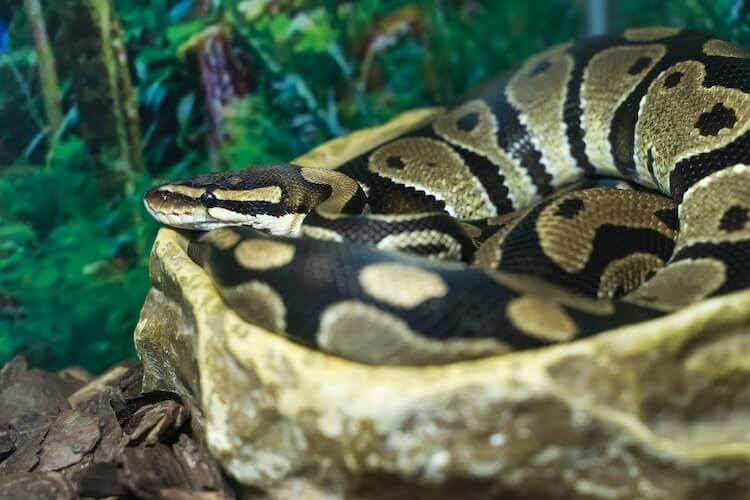
Snakes are ectotherms, this means Ball Pythons cannot regulate their own body temperature. They rely on their environment for heat to gain energy to move and digest food.
Because ball pythons cannot regulate their own body temperature, they must regulate it by moving between warmer and cooler areas. They can only do this if the enclosure is properly setup with a temperature gradient. If they become too cold, they can simply move to the basking spot, or vice versa by moving to a cold hide to cool down.
This is why having a heat gradient in your ball python’s tank is important.
Tank Temperature
| Ball Python Temperature Range | ||||
|---|---|---|---|---|
| Basking Spot | Ambient | Cool Side | Night | |
| Min | 88°F | 81°F | 76°F | 75°F |
| Max | 92°F | 83°F | 80°F | – |
We generally talk about a heat gradient in three parts:
- Basking spot (i.e. hot spot).
- Ambient temperature.
- Cool side.
The hot spot is the side of the enclosure your snake will use to warm up and bask. The basking spot should measure 88 to 92°F and is the only side of the tank you should be heating. The basking spot should not exceed 95°F as it can cause your snake to overheat.
Ambient temperature is the temperature in the middle of the tank, between the hot spot and cool spot. The ambient temperature should measure 82°F, although a degree or two above or below this is acceptable. The most important thing is that this temperature should always be cooler than your hot spot and it should not dip below 75°F.
The cool spot in your enclosure is where your snake will go to cool off. The cool spot should measure at around 76 to 80°F.
Tank temperatures will fall at night as you turn off the heating and lighting. This naturally occurs in the wild too. A 5°F drop is perfectly acceptable, just do not allow the temperature to dip below 75°F. Deliberate temperature drops should only be used if you are planning to breed a ball python.
Hide Temperature
As you may have read in our ball python care guide, your snake is going to need two hides.
Place one hide on the hot side, and one on the cool side.
Your hot hide should be about 90°F, and your cool hide should be about 78-80°F. Ball pythons in the wild are generally not seen basking in the open. Make sure your hides are well hidden in the tank too.
Now that you know what the temperature gradient should be, we can talk about how to achieve it.
Heat Sources
To achieve the right temperature for a ball python you will want to establish a heat gradient and day and night cycle. You should also only be heating one third of the enclosure where the basking spot is.
The most common heating systems for beginners are under tank heating pads or ceramic bulbs.
Under Tank Heating Pad
Under tank heating pads (i.e. heating mats) should be placed under one third of the tank. This will create a temperature gradient as the hot air will naturally cool as it travels to the cooler side of the tank.
Keep the mat under the bottom of the tank, not inside the tank. The bottom of the enclosure, plus the substrate, create enough of a barrier to avoid burning the snake. If you decide to use a heating mat, you should carefully check your snake’s belly for the first week for areas of excessive redness.
The other option is to use a ceramic bulb.
Ceramic Bulb
The biggest issue with ceramic bulbs is that they heat the air as well as the ground. It is easy to overheat the entire tank, so you need to make sure that it only heats one third of the tank. This can be especially hard for ball pythons kept in smaller 20-gallon tanks.
If you use a ceramic bulb, you will want to screw it into a fixture that hangs over the tank. Avoid placing any heat sources directly inside the tank. This increases the risk of your snake burning itself.
Whenever you use a heat source you should connect it to a thermostat. This will regulate the tank’s temperature and shut off the heat source if it malfunctions or raises the temperature beyond a limit.
To make sure a heat gradient is properly established in the tank you should set up the enclosure for at least two nights before introducing your ball python.
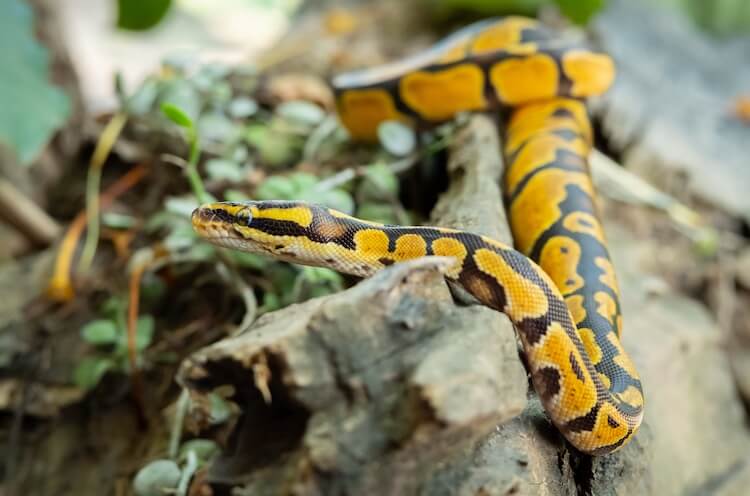
Summary
Your ball python’s enclosure is one of the most important husbandry aspects for its overall health and happiness. A good setup can add 10 years to your snake’s lifespan.
Regardless of the morph, Ball Python humidity should range from 55% to 60%.
If you need to increase humidity, your best options are misting the tank daily, moving the snake’s water bowl over the under tank heat mat, changing the substrate to cypress mulch or cover 75% of the screen with tin foil. If you need to decrease humidity, you should increase ventilation in the tank by swapping a glass top for a screen top.
Ball Pythons thrive in warm, moist habitats. Their basking spot should be 88 to 92°F and the cooler side should range from 76 to 80°F. A heat gradient allows them to thermoregulate, as they would in the wild. Heating mats are ideal for smaller tanks to establish a temperature gradient.
How do you heat your tank? Let us know in the comments!

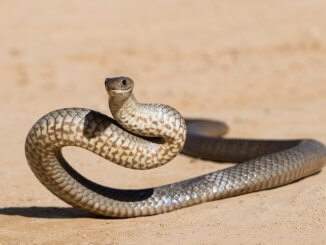
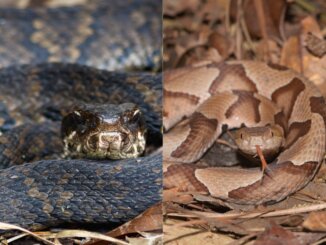
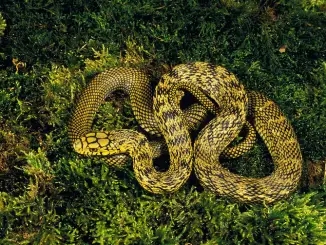

55-60% humidity usually causes stuck shed,dented eye caps,and other problems related to dehydration. In recent times,its discovered a minimum of 65% will usually ensure they are well off. As far as substrate goes,aspen is terrible at holding humidity and molds easily. I noticed that was mentioned as a good option. Cypress,coco husk,and coco fiber work the best at holding humidity and preventing mold and bacteria growth from dampening the substrate to keep humidity stable. Many pages like this support the idea of a lower humidity and lower end substrates. Theres many forums out there dedicated to the care of these animals and so many people show up asking why their snake wont eat,isnt shedding right,etc. When it comes down to it,it is usually because they were told to have improper husbandry. This is one of the better pages i have seen but still should do some more research and tweak a few things.
Dear Chris. Thanks for speaking your mind about all this. I’m happy you thought this was one of the best pages out there. As for your suggested corrections: What is your source concerning the humidity requirements? I would happily update the article if you provide published research This comment section can serve as a place to discuss new ideas, techniques and so on, including new research. I have hundreds of articles, so I can’t update them all as new research comes out on a daily basis.
As for the rest of your comment, I have mentioned cypress as a really good substrate, and more than 60% humidity as an ideal temperature (although a bit more risky in terms of ending up with an environment that is too wet). Aspen will mold, like many other substrates, but it won’t take a day. You might just end up cleaning the tank more often. Also, plenty of Pythons have lived a long and happy life with an average 60% humidity, so this won’t necessarily cause dehydration issues.